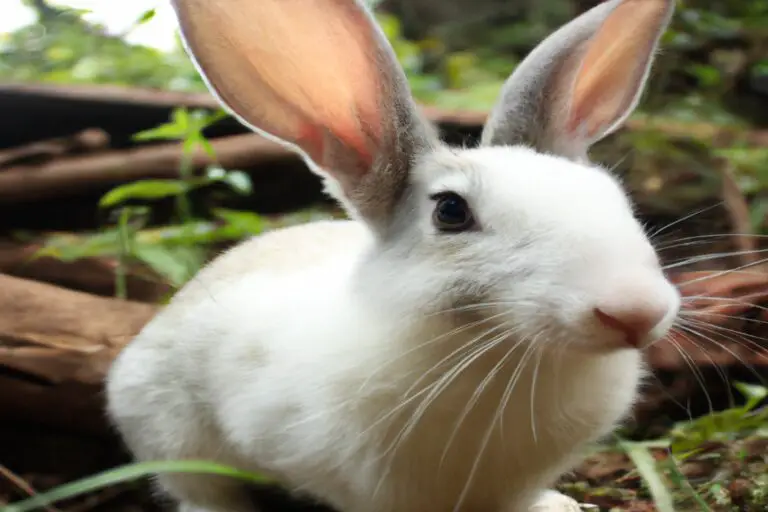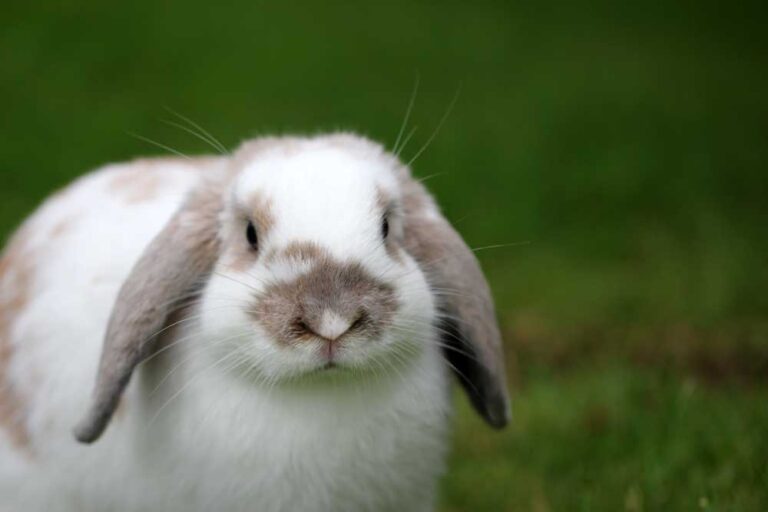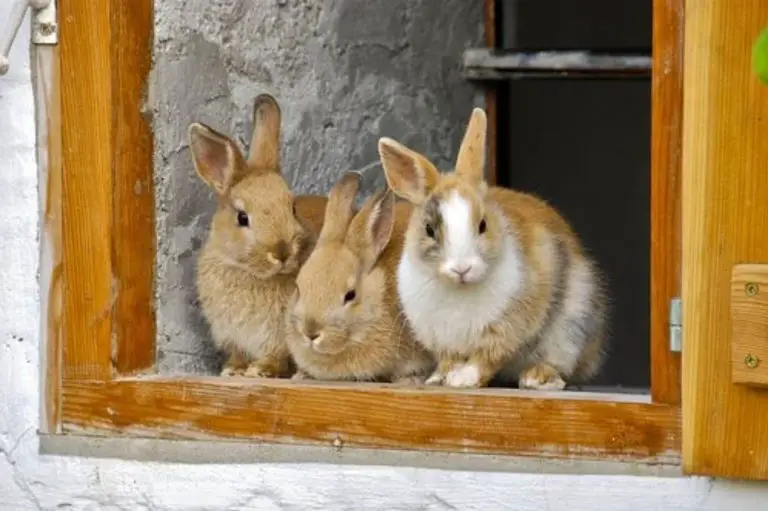What Does Rabbit Tobacco Look Like? Find Out Now!
Key Takeaways:
- Rabbit tobacco is a small, flowering plant that resembles a stick or a wand.
- Its leaves are narrow, gray-green in color, and covered with tiny hairs.
- The plant produces clusters of small, white or yellow flowers.
- When dried, rabbit tobacco retains its shape and can be used in various craft and herbal medicine applications.
Have you ever come across a plant known as rabbit tobacco, and wondered what it actually looks like? Well, you’re in luck! In this article, we’re going to dive deep into the appearance of rabbit tobacco, its physical characteristics, leaf structure, color, flowering and seed production.
With this knowledge, you’ll be able to easily spot rabbit tobacco in the wild and even identify it among similar plants.
Whether you’re a nature enthusiast, herbal medicine lover, or simply curious about unique flora, keep reading to uncover the secrets of rabbit tobacco’s distinctive features and its various uses.
| Common Name | Rabbit Tobacco |
| Scientific Name | Gnaphalium obtusifolium |
| Family | Asteraceae |
| Native to | North America |
| Size | Up to 3 feet tall |
| Leaves | Oblong, woolly, and grayish-green in color |
| Flowers | Small, white, and clustered at the top of the plant |
| Blooming Period | Summer to fall |
| Uses | Traditional medicinal plant, often used in smoking mixtures or teas |
Appearance of Rabbit Tobacco
Rabbit tobacco has a distinct appearance, with its tall and slender stems, grayish-green leaves, and clusters of small yellow flowers at the top.
Physical Characteristics of Rabbit Tobacco
Rabbit Tobacco, also known as Gnaphalium obtusifolium, is a perennial plant that can grow up to 3 feet tall. It has narrow, lance-shaped leaves that are covered in fine, white hairs, giving them a fuzzy appearance.
The plant produces small, yellow flowers that are arranged in dense clusters at the top of the stem.
The flowers have a pleasant, sweet scent. Overall, the physical characteristics of Rabbit Tobacco make it easily recognizable in its natural habitat.

Leaf Structure and Color of Rabbit Tobacco
Rabbit tobacco has long, narrow leaves that are covered in fine hairs. The leaves are arranged alternately along the stem, and they grow in a spiral pattern.
The color of the leaves can vary, but they are usually grayish-green or silver-gray.
Some varieties may have a hint of purple or pink on the undersides of the leaves. It is important to note that the leaf shape and color may vary slightly depending on the specific species or cultivar of rabbit tobacco.

Flowering and Seed Production in Rabbit Tobacco
Rabbit Tobacco, also known as Gnaphalium obtusifolium, is a perennial plant that flowers from late summer to fall.
The flowers are small and white, forming in tight clusters at the top of the plant.
After flowering, the plant produces seed heads covered in fluffy, cotton-like hairs, resembling a rabbit’s tail.
These seed heads often persist through the winter months, providing visual interest in the garden or landscape.
Seed production in Rabbit Tobacco is abundant, making it a prolific self-seeder.
The plant spreads easily, so it’s important to control its growth if necessary.
Habitats and Distribution of Rabbit Tobacco
Rabbit tobacco can be found in a variety of habitats across its native regions, and it thrives in well-drained soils and open areas such as meadows, fields, and roadsides.
Native Regions of Rabbit Tobacco
Rabbit tobacco, also known as “Pseudognaphalium obtusifolium,” is native to North America.
It can be found in various regions across the continent, including the eastern United States, from Florida to Maine, as well as parts of Canada.
Rabbit tobacco is well-adapted to thrive in dry, sandy soils, and can often be found in fields, meadows, and open woods.
Its ability to grow in different regions makes it a versatile and resilient plant.

Preferred Growing Conditions for Rabbit Tobacco
Rabbit tobacco, also known as Pseudognaphalium obtusifolium, prefers to grow in well-drained soils. It thrives in full sun exposure but can also tolerate light shade.
This plant is typically found in open meadows, fields, and prairies.
Rabbit tobacco can adapt to a wide range of soil types, including sandy or clay soils. It is a resilient plant that can withstand drought conditions, making it suitable for various regions.
With the right conditions, you can easily grow rabbit tobacco in your garden or outdoor space.
Common Habitats for Rabbit Tobacco
Rabbit tobacco, also known as life everlasting or sweet everlasting, can be found in a variety of common habitats. It’s often found along roadsides, in meadows or fields, and in open woodlands.
The plant prefers well-drained soil and full sun exposure.
Rabbit tobacco is a hardy plant that can tolerate dry conditions, which allows it to thrive in grasslands and prairies as well. So if you’re looking for some rabbit tobacco, try exploring these types of environments!
Uses of Rabbit Tobacco
Rabbit Tobacco has various uses, including medicinal properties, traditional practices, and modern applications.
Medicinal Properties of Rabbit Tobacco
Rabbit Tobacco, also known as Gnaphalium obtusifolium, has several medicinal properties that make it a popular herb in traditional medicine. It is primarily used for respiratory issues such as bronchitis, coughs, and asthma.
Rabbit Tobacco is believed to have expectorant properties, helping to loosen and expel phlegm from the lungs.
Additionally, it is thought to have anti-inflammatory effects, which can provide relief for conditions such as arthritis and sore muscles. Some people also use Rabbit Tobacco topically to treat skin conditions like eczema and psoriasis.
However, it is important to note that more research is needed to fully understand and validate the medicinal properties of Rabbit Tobacco.
As with any herbal remedy, it is recommended to consult with a healthcare professional before using Rabbit Tobacco for medicinal purposes.
Traditional Uses of Rabbit Tobacco
Traditional Uses of Rabbit Tobacco
- Smoking: Rabbit tobacco leaves have a long history of being used in traditional smoking blends. They can be dried and smoked for their calming and relaxing effects.
- Medicinal purposes: Rabbit tobacco has been used in traditional medicine for various purposes. It is believed to have antispasmodic, diuretic, and expectorant properties, making it useful for treating respiratory issues, digestive problems, and nervous disorders.
- Insect repellent: The strong scent of rabbit tobacco has made it a popular choice for repelling insects. It can be used by placing dried leaves in sachets or burning them to keep mosquitoes and other pests away.
- Spiritual and ceremonial use: Rabbit tobacco holds spiritual significance in some indigenous cultures. It is often used in ceremonies, rituals, and smudging practices for cleansing, purification, and connecting with the spiritual realm.
- Crafting purposes: The fluffy seed heads of rabbit tobacco are sometimes used in crafting, particularly in making decorative arrangements, wreaths, and dried flower bouquets.
Note: Please consult a healthcare professional before using rabbit tobacco for medicinal purposes.
Modern Applications of Rabbit Tobacco
Rabbit tobacco, also known as life everlasting, has several modern applications. It can be used as a natural insect repellent, particularly effective against mosquitoes.
Rabbit tobacco leaves can also be used to make a soothing herbal tea that may help with respiratory issues such as coughs and congestion.
Additionally, the dried flowers of rabbit tobacco can be used in potpourri or as natural decorations. Its antimicrobial properties make it a potential ingredient in natural skincare products.
Overall, rabbit tobacco offers a range of practical and versatile applications.
Identification of Rabbit Tobacco
To identify rabbit tobacco, look for tall, slender stems with clusters of small, yellow flowers at the top and silvery-green leaves along the length of the stem.
Similar Plants to Rabbit Tobacco
Some plants that are similar to rabbit tobacco include mullein, vervain, and goldenrod. Mullein has similar fuzzy leaves and tall flower spikes.
Vervain also has tall spikes of flowers, and goldenrod has similar yellow blooms.
These plants can sometimes be mistaken for rabbit tobacco, so it’s important to carefully examine the characteristics and consult a field guide or expert if you’re unsure.
Differences Between Rabbit Tobacco and Other Plants
Rabbit Tobacco has unique characteristics that set it apart from other plants. Unlike most plants, rabbit tobacco has long, slender leaves with serrated edges.
Its stems are hairy and can grow up to 3 feet tall.
The plant also produces small, white flowers that bloom in late summer. One distinguishing feature of rabbit tobacco is its strong, pleasant fragrance, which is often compared to that of fresh hay.
Overall, these differences make rabbit tobacco easily distinguishable from other plants in its surroundings.
How to Identify Rabbit Tobacco in the Wild
When trying to identify Rabbit Tobacco in the wild, there are a few key characteristics to look for. Firstly, this plant has distinct, long, and slender leaves that are narrow towards the tip.
The leaves are also covered in fine hairs, giving them a fuzzy texture.
Secondly, Rabbit Tobacco has small, yellowish-white flowers that grow in clusters resembling cotton balls. These flowers can be found on long, slender stems.
Lastly, Rabbit Tobacco is known for its aromatic scent, which is reminiscent of tobacco.
By keeping an eye out for these features, you’ll be able to identify Rabbit Tobacco with confidence.
Frequently Asked Questions about Rabbit Tobacco
Is Rabbit Tobacco Safe to Consume?
Rabbit Tobacco, also known as Gnaphalium obtusifolium, is generally considered safe to consume. However, it is important to note that there is limited scientific research on its effects in humans.
Some individuals have reported using it to make tea or smoke it for medicinal purposes, such as relieving respiratory issues or promoting relaxation.
However, it is always recommended to consult with a healthcare professional before consuming any herbal remedy to ensure it is safe for you.
Where Can I Find Rabbit Tobacco Seeds or Plants?
You can find rabbit tobacco seeds or plants at local gardening stores, online seed retailers, or through specialized native plant nurseries. It may be helpful to check with nearby botanical gardens or horticultural societies for recommendations on where to find rabbit tobacco.
Additionally, connecting with local gardening communities or plant enthusiasts can also provide valuable insights and resources for obtaining rabbit tobacco seeds or plants.
Can Rabbit Tobacco be Used for Smoking?
Yes, rabbit tobacco can be used for smoking.
It has been traditionally used as a natural alternative to tobacco, especially by Native American tribes.
The leaves are dried and then smoked to produce a mild, aromatic smoke.
While it may not provide the same experience as smoking cigarettes, some people enjoy the taste and aroma of rabbit tobacco smoke.
However, it’s important to note that smoking any substance can be harmful to your health, so it’s always best to use caution and moderation.
Does Rabbit Tobacco Attract Wildlife?
Rabbit Tobacco does attract wildlife.
Its aromatic leaves and flowers are known to attract bees and butterflies, making it a popular plant choice for pollinators.
Additionally, the seeds of Rabbit Tobacco are often consumed by birds, which helps spread the plant to other areas.
So if you’re looking to attract some beautiful wildlife to your garden, Rabbit Tobacco might be a great option!
Final Verdict
Rabbit tobacco, also known as gnaphalium obtusifolium, is a unique and striking plant with distinct physical characteristics.
Its leaves are shaped like elongated ovals with a fuzzy texture, and they range in color from green to gray.
The plant produces small, yellowish-white flowers that give way to seeds.
Rabbit tobacco is native to various regions in North America and thrives in open fields, meadows, and disturbed areas.
It has a long history of medicinal use, with applications ranging from treating respiratory ailments to relieving diarrhea.
While it may resemble other plants in the Asteraceae family, its leaf structure and texture, as well as its distinctive flowering and seed production, make it easily identifiable.
In conclusion, rabbit tobacco is a versatile and valuable plant with numerous uses and a unique appearance that sets it apart from other plants in the wild.
Whether used medicinally or simply appreciated for its aesthetic qualities, rabbit tobacco is a valuable addition to any ecological landscape.







